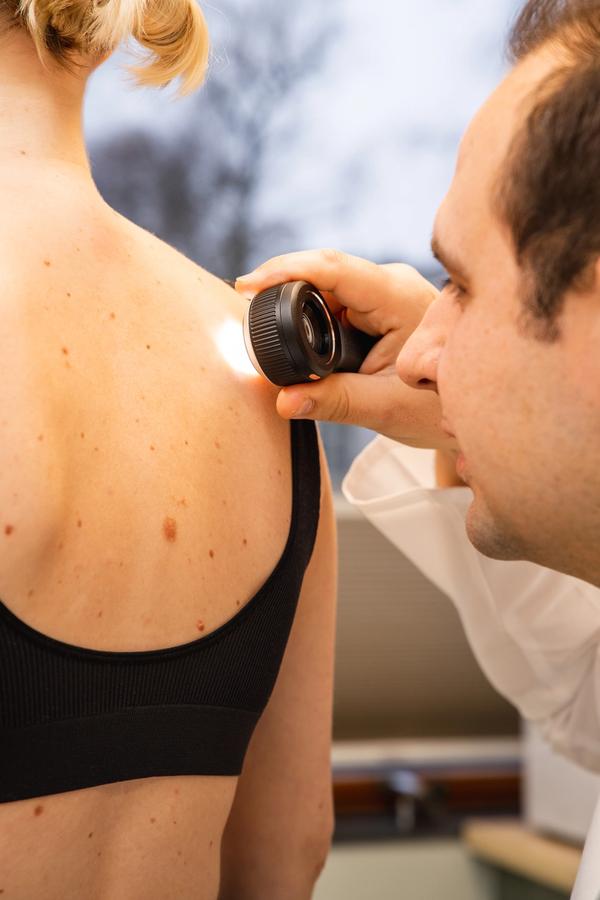Mole removal
The vast majority of general practitioners can remove moles, but if you are in doubt about the diagnosis, moles are very large or sitting in an unfavourable place (eg neck, face or scalp), most people tend to refer to a dermatologist.
If you have a common mole, where none of the risk factors as described above are present, it is not necessary to remove the mole. Especially if it is on the chest/stomach of younger individuals, one will be reluctant to remove it, as it can form ugly scars afterwards which can be annoying.
If an indication has been found to remove a mole, this is easily done under local anaesthesia, where the skin around the mole is anaesthetized and the doctor cuts away the mole by removing a small piece of the skin. The doctor will try to remove between 2-5 mm of the skin around the mole, in case there should be mole cancer, one always strives to get all the cells from the mole. The wound is then closed with a thread, where the stitches should sit for 10-14 days. For the first 3-4 days, it is advisable to keep the wound dry and avoid a lot of movement in the skin here.
The doctor will send the mole that was removed to the laboratory for analysis, should it turn out to be cancer cells in it, the further course of it depends on how large it was if the entire mole was removed. The doctor who removed it will contact you to inform you about further treatment.




